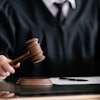
Hospital admissions charges because of nontraumatic dental infections cost Texas $1.7 billion over 10 years, according to a new analysis of inpatient hospital data. These infections also cost nearly 200 Texans their lives.
 Josefine Ortiz Wolfe, RDH, PhD.
Josefine Ortiz Wolfe, RDH, PhD.The data come from a new report by the nonprofit Texas Health Institute, which sought to quantify some of the economic costs associated with a lack of dental care. The institute published the findings, including the staggering dollar amount, during a webinar on April 10.
"That is a lot of money," said Josefine Ortiz Wolfe, RDH, PhD, director of oral health for Texas Health Institute, during the webinar. "But when we think about the lives lost ...," Ortiz Wolfe paused, "196 Texans lost their lives -- 196 Texans over 10 years lost their lives to a mostly preventable disease. And this does not account for individuals who did not make it to a hospital setting."
Counting the costs
The number of dental emergencies seen at hospitals has been increasing for decades. However, few studies have analyzed the economic impact associated with treating dental-related conditions at hospitals, which are often not in a position to treat underlying dental diseases.
“We want to make sure everyone has an equal opportunity to lead an optimal life.”
To better quantify the economics of nontraumatic dental condition treatment in hospitals, researchers from the Texas Health Institute parsed inpatient hospital utilization data from 2007 to 2016. The data included information on patient demographics, diagnosis, and payors.
Between 2007 and 2016, almost 48,000 Texans were given inpatient treatment at hospitals for nontraumatic dental conditions. The hospitals charged insurers $1.7 billion, or about $37,000 per patient, for this care. In addition, 196 patients died after being admitted to a hospital for a nontraumatic dental condition.
The most commonly diagnosed condition was cellulitis of the face secondary to a nontraumatic dental condition, followed by periapical abscess without sinus involvement. Working-age adults, defined as those 20 to 64 years old, and those in rural communities were some of the most likely people to be admitted.
"The story that this tells us is that these conditions are preventable conditions," Ortiz Wolfe said. "When we're looking at those groups [of individuals who resort to a hospital setting for dental care], it's individuals who do not have access to care."
Moving forward
 Ankit Sanghavi, BDS, MPH.
Ankit Sanghavi, BDS, MPH.The story of how dental infections escalate to an inpatient hospital stay follows a similar pattern, noted Ankit Sanghavi, BDS, MPH, executive director of the Texas Health Institute. A person with a minor dental infection cannot access routine or preventive dental care. Eventually, that person visits an emergency department and is an antibiotic or pain medication but is not treated for the underlying cause. Then, the infection eventually comes back, often worse than it started, until it results in a medical emergency that must be treated in a hospital setting.
"It reflects a systemic problem," Dr. Sanghavi said. "Something that could have been prevented to begin with."
Now is the time for Texas to be proactive, rather than reactive, about addressing this situation, Dr. Sanghavi added. Texas has a population of more than 28 million people and is one of the largest and fastest-growing U.S. states. However, it also does not provide adult dental Medicaid benefits and has the highest uninsured rate in the country, with 17% of Texans being uninsured, according to the report.
Dr. Sanghavi stressed the charges from inpatient hospital treatment is only one of many costs to the state for lack of access to dental care. The $1.7 billion figure does not include the cost of lost wages, missed school days, or the inability to care for dependents. Nor does the number account for humanitarian and scientific costs that cannot be measured in dollars.
"It's definitely an equity conversation," Dr. Sanghavi said. "We want to make sure everyone has an equal opportunity to lead an optimal life."



















